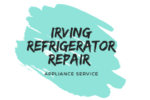This Snippet has been extracted from “Home repair and improvement Creative Homeowner, Upper saddle River, New Jersey”. Servicing Gas-Fired Water Heaters serves a a heat transfer process that uses an energy source to heat water above its initial temperature. “Appliance Repair in Irving TX“, renders services on this kind of heaters.
Servicing Gas-Fired Water Heaters
Gas-fired water heaters have service needs that are different from those for electric units. You may experience problems with the combustion process, the vent pipe the burner itself, or the thermocouple and pilot.
Combustion-Air Problems
If your gas-fired water heater makes a puffing sound at the burner, it’s not getting enough air. Air shortages are especially common in utility rooms, where a water heater, furnace, and clothes dryer all compete for air. Allow the water heater to run for a few minutes with the utility-room door closed. When it starts puffing, open the door and a nearby window. If the flame settles into smooth operation, inadequate combustion air was the culprit. Either cut a large vent or add a louvered door to the room.
Vent-Pipe Problems
When a gas-fired water heater runs, it creates a thermal draft, in which air from the room is also drawn up the flue. If there is insufficient secondary air or if the flue is partially clogged, deadly carbon monoxide gas may spill into your living space. Because carbon monoxide is odorless and invisible, it pays to test the efficiency of the flue from time to time. You can call your gas company for a sophisticated test, but the following method work. If the utility room has door, close it. Wait a few minutes for the heater to develop a good draft, and then hold a smoking match, incense stick or candle about 1 inch from the flue hat at the top of the heater (photo above, right). If the flue draws in the smoke, all is well. If the smoke is not drawn in or is pushed away from the flue, there’s a problem. To determine whether the problem is an air-starved room or a clogged flue, repeat the procedure with a door drawn into the flue, make the corrections noted in “Combustion –Air Problems,” above. If not, call in a professional to inspect the flue.
Maintaining the Thermocouple and Burner
The job of the thermocouple is to hold the gas valve open so that gas can flow to the burner and pilot. If the pilot on your gas fired water heater goes out and the heater goes out again after you re-light the pilot, the thermocouple is probably misaligned of defective.
Before buying, a new thermocouple, perform this simple test, check to see whether the existing thermocouple’s sensor is positioned directly in the path of the pilot flame surrounds the sensor. Then light the pilot to see whether it keeps burning. If not, a new thermocouple is in order.

Clean the Burner
As combustion gases degrade the inner surface of the water heater, flakes of rusty metal may fall onto the burner’s perimeter. With some jets blocked, the rest will flame orange and high, signaling a loss in efficiency.
Check the burner for rust as part of your routine maintenance. With the heater turned to pilot, remove the outer and inner access, panels at the base of the heather. Shine a flashlight onto the burner. If you see rust on top of the burner. Vacuum it off. Then turn on the water heater. If some of the gas openings still appear clogged, you’ll have to remove the burner to clear them out. To do so, turn off the gas and loosen the nuts securing the three burner tubes to the gas control valve. Slide out the burner, and poke through the openings with a piece of wire.
Replace the Thermocouple
If you need to replace the thermocouple, pull the sensor from its clip. (Some are held in place by a screw.) Take the old thermocouple to a hardware store, and buy a matching one. Connect the new thermocouple, making sure that the sensor will catch the pilot flame. Reinstall the burner, and reconnect the burner tubes to the control valve.
To re- light the water heater, press down on the pilot button and hold it down for 30 seconds before lighting a match held with needle-nose pliers. Feed the flame into the heater. If the pilot goes out when you let up on the button, repent the procedure. You may need to do this several times line. When the pilot stays on, replace the access panels and turn the control knob to “On.”
Continue reading on Refrigerators and freezers


